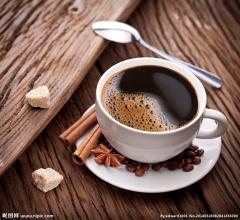How do you describe the flavor of Colombian sunburn coffee beans?
How do you describe the flavor of Colombian sunburn coffee beans?
Tolima, adjacent to huila and cauca, is an area where many coffee-producing pilgrims need to make up their minds to travel. The road conditions here are not very ideal, and some of the talented people who have visited tolima all describe the bumps and hardships on the way to the car shop in their travels.
The farms in Tolima are generally slightly larger than those in other southern Colombian producing areas, ranging from 10 to 15 hectares. The cooperative approach is also popular here, where farmers send their small batches of fresh coffee and fruit to the cooperative's processing plant. Some farmers will also choose to deal with it on their own, making use of their own small-scale treatment facilities that can handle the harvest of the day. Carefully processed raw beans can be negotiated according to the cup test results, and a few batches that are outstanding will be kept as "micro batches", microlot, and sent to Bogota, the capital, for further cup testing. The rest of the raw beans are generally mixed and sold according to the cup test flavor.
Like other Colombian regions, the classic treatment here is water washing, that is, wet treatment. Dry in the sun.
Each fruit contains 2 coffee beans (except one pod of single bean Peaberry). The fruit of this kind of coffee contains only one coffee bean. Normally, 5% of each batch of coffee beans is a single pod. Coffee beans can be roasted and washed after drying and treatment: the peel, pulp and mucous membrane are removed by washing and fermentation. This method is also known as the complete washing method (Fully Washed). Shampoo is the most common way for most coffee-producing countries in the world to handle Arabica coffee beans. Some areas also use advanced high-pressure washing machines to clean the peel, pulp and mucous membrane of coffee beans, so fermentation is no longer needed. This method of using a high-pressure washing machine to treat coffee beans is called "Natural washing (Pulped Natural)," which is the simplest process. The fruit begins the process of sun drying without treatment after picking. This is the oldest method of treatment in existence. This method is still used in places such as Ethiopia and Brazil. Natural solarization is most common in areas where water resources are scarce. The drying process usually lasts about 4 weeks. The method of handling must be very strict to ensure that the coffee does not lose any flavor. The natural sun method requires the local climate to be extremely dry. In some areas, people use dryers to assist in the drying process of coffee fruit (the hot air of the dryer can speed up the drying process and help people control the degree of drying)

Important Notice :
前街咖啡 FrontStreet Coffee has moved to new addredd:
FrontStreet Coffee Address: 315,Donghua East Road,GuangZhou
Tel:020 38364473
- Prev

Flavor description of Sidamo Lion King Coffee Bean
The flavor of Sidamo Lion King Coffee beans describes the characteristics of the varieties. The depth of the soil is nearly two meters. The surface soil is dark brown or brown. The biggest advantage of this place is that the soil fertility is maintained through the circulation of natural organic matter, with the withered leaves or litter of the surrounding trees and the residual roots of plants as natural fertilizer. This batch is produced in Dilla.
- Next

Description of Coffee Flavor in Sidamo Coffee; introduction to the quality of the processing method in the manor area
Sidamo coffee flavor description manor area treatment quality introduction the coffee used by Flower Butterfly comes from the Baru volcano region of the Boqui specialty region of Panama. Up to 1600 meters above sea level, the special microclimate leads to abundant rainfall and large temperature difference between day and night in this area, coupled with fertile volcanic soil, as well as meticulous planning and management of the harvest period, so that the coffee here is either thick or sour.
Related
- Detailed explanation of Jadeite planting Land in Panamanian Jadeite Manor introduction to the grading system of Jadeite competitive bidding, Red bid, Green bid and Rose Summer
- Story of Coffee planting in Brenka region of Costa Rica Stonehenge Manor anaerobic heavy honey treatment of flavor mouth
- What's on the barrel of Blue Mountain Coffee beans?
- Can American coffee also pull flowers? How to use hot American style to pull out a good-looking pattern?
- Can you make a cold extract with coffee beans? What is the right proportion for cold-extracted coffee formula?
- Indonesian PWN Gold Mandrine Coffee Origin Features Flavor How to Chong? Mandolin coffee is American.
- A brief introduction to the flavor characteristics of Brazilian yellow bourbon coffee beans
- What is the effect of different water quality on the flavor of cold-extracted coffee? What kind of water is best for brewing coffee?
- Why do you think of Rose Summer whenever you mention Panamanian coffee?
- Introduction to the characteristics of authentic blue mountain coffee bean producing areas? What is the CIB Coffee Authority in Jamaica?

